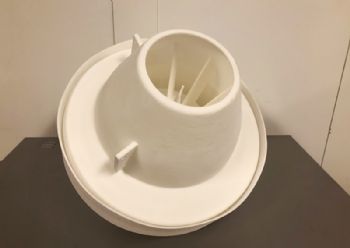
According to the Commercial Carrier Journal, Volvo Trucks North America is using 3-D printing technology to produce tools and fixtures used in the manufacturing process at its New River Valley (NRV) truck assembly plant in Dublin, Virginia.
Franky Marchand, the facility’s general manager (
www.volvogroup.com), said Volvo Trucks began exploring the use of 3-D technology with a prototype approach, identifying opportunities to improve quality in the manufacturing process.
“Several years later, we can now say that 3-D printing has become an integral part of our manufacturing processes and culture at NRV,” adding that the implementation of 3-D printed manufacturing tools enables quicker production and continuous quality improvements.
“3-D printing has improved quality and precision by printing exact copies from models. The technology effectively eliminates error, increasing the chances of first-time through (FTT) production of assembly tools and fixtures, streamlining the manufacturing process and enabling customers to receive end products quicker.”
Adam Crowder, manager of Advanced Manufacturing Technology at NRV, said that after years of internal exploration with 3-D printing technology and fine-tuning, it now has more than 500 manufacturing tools and fixtures in use on the NRV shopfloor that were produced using 3-D printing.
“All of these parts were printed at the Volvo Innovative Projects lab at the Dublin facility with selective laser sintering (SLS), a 3-D printing technology that uses a laser to sinter powdered plastic material into a solid structure that is then rigorously tested and put into use in the manufacturing process.”
Volvo Trucks says it also used 3-D printing technology to develop a one-piece diffuser used in the paint atomiser cleaning process, saving the company more than $1,000 per part and eliminating the need for a multi-piece component.
Spare parts were also produced for the 20 that were created, so that they can easily and quickly be replaced, should wear occur.